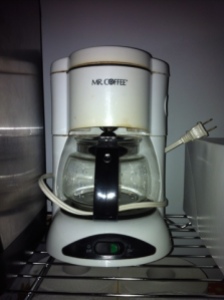I could not believe what I was seeing. I rubbed my eyes, but it was still there: Yet another ice cream shop claiming to be “the only real ice cream.” This particular establishment’s claim to reality was based on its use of milk from cows that had not been fed hormones – that, and, I imagine, the scandalous prices it charged.
Doesn’t it seem like there has been a proliferation of these ice cream shops claiming to have the only “real” ice cream? How can there be only one real ice cream? If this ice cream was the only real ice cream, what had I been eating before?

I did some research from my couch. Reality is not as simple as these retailers of ice cream had led me to believe. One thing was for certain: a lack of growth hormones was not the only definition of reality. This knowledge was comforting, but it had to be put to the test. I would have to open my own ice cream shop based upon what I had learned.
The Real Deal (the only REAL ice cream!) opened up to as much fanfare as I could muster on a single Facebook post that took me two seconds to compose. And a sign with this message greeted customers:
The ice cream is real because you believe it is real.
It was an instant success. Before long, the lines were out the door and I had to instruct my employees to be extra rude to keep it from getting too crowded. I had a monopoly on real ice cream and I didn’t even know what flavors we had – it didn’t matter!
At least, not until a competitor opened up across the street, claiming to have “the only really real ice cream” around. I put on a disguise, and went to see what made this ice cream real. At the entrance was a sign:
The ice cream is real because you can feel it and taste it.
I bought a small cone – I couldn’t believe what they were charging for a small – and tasted it. Yes, the tasting of the ice cream did seem more real than merely thinking about it. My customers had left for this competitor, and who could blame them?
After negotiating an expensive licensing agreement with the new ice cream shop to use their feel/taste formula for making real ice cream, I was glad to be back as a player in the market for real ice cream. And my customers came back…for a day. Because then yet another competitor opened.
No Ice Cream Is Real had lines out the door. Once again in my disguise, I waited on line and when I got to the entrance there was a large sign:
No ice cream is real because no ice cream can prove it is real.
And there was no ice cream for sale. Instead, the refrigerated bins behind the diagonal glass panes were filled with slips of paper – paper of every color and thickness, with a small basket of pencils at the register – so that people could work out for themselves why no ice cream is real and therefore satisfy their craving for something that did not exist.
And outside there were picnic tables where customers were sitting and working out on the slips of paper why no ice cream could prove it was real. Some of them had the paper in a cone, and others in a cup. They all seemed to be enjoying themselves proving why real ice cream does not – nay, cannot – exist. It was such a simple and beautiful idea. I could see why everyone wanted unreal ice cream from this place; it was truly the only place for real unreal ice cream. And you would not believe what they were charging for a slip of paper.



